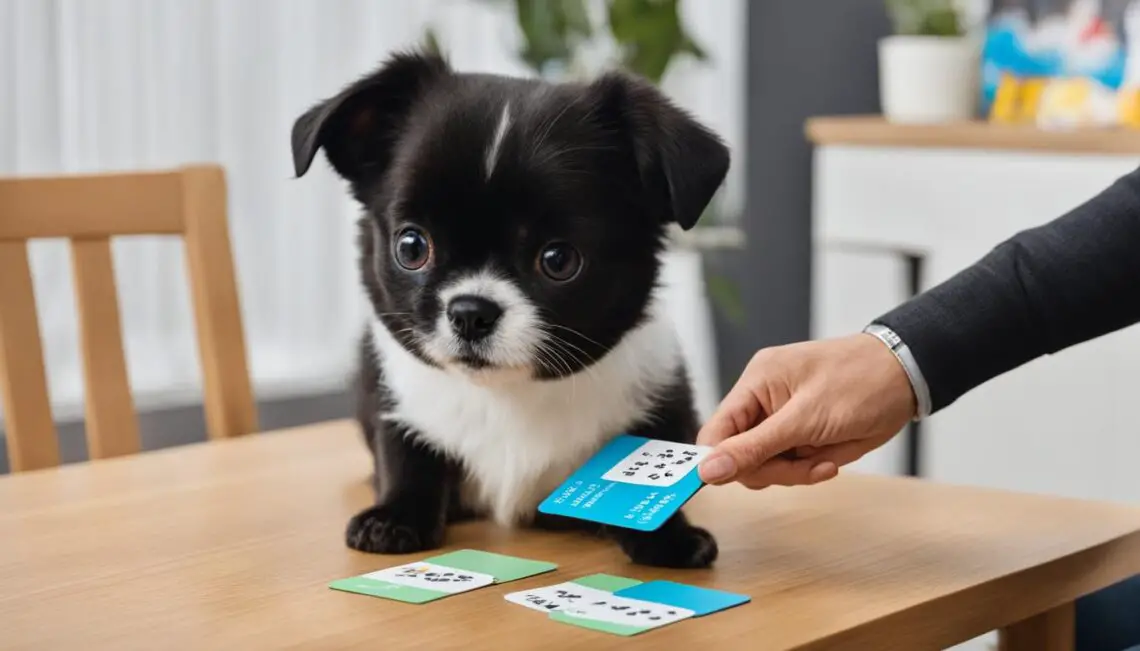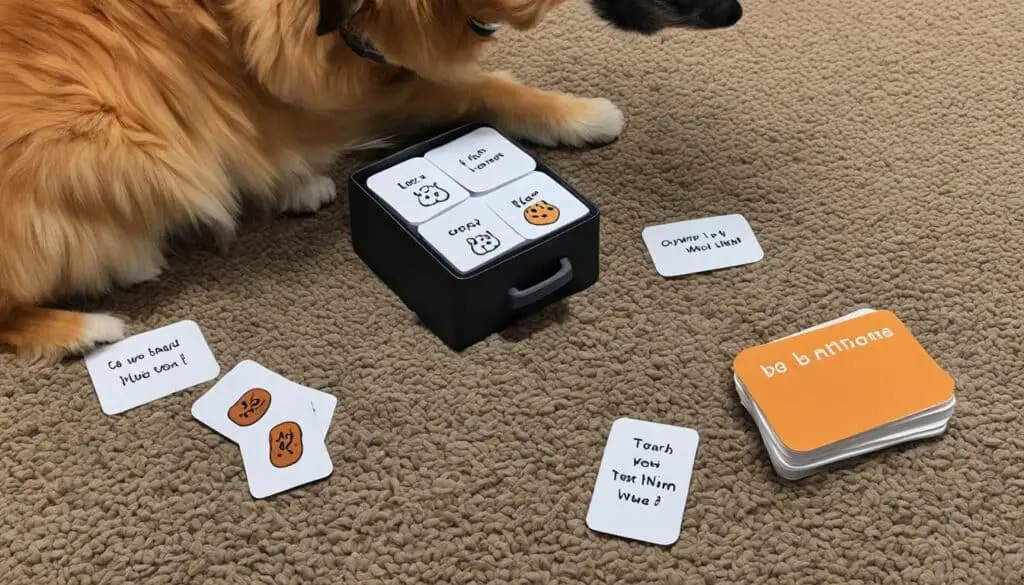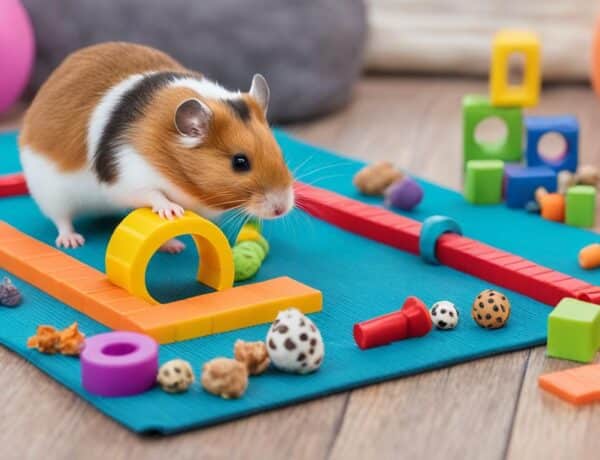Training your small pet to respond to its name is an essential part of pet ownership. Whether you have a dog, cat, or any other small pet, teaching them to recognize their name can make communication easier and enhance their safety. In this article, I will guide you through the process of training your furry friend to respond when called.
Key Takeaways:
- Training your small pet to respond to its name is important for effective communication.
- Positive reinforcement is an effective method for teaching name recognition.
- Consistency and repetition are key to successful training.
- Avoid associating negative experiences with your pet’s name.
- Recall training is closely related to name recognition and should be included in the training process.
The Importance of Name Recognition for Pets
Name recognition is a fundamental aspect of pet training that plays a vital role in promoting effective communication and ensuring the safety of your furry companion. When a pet responds to their name, it opens up a world of possibilities for training and bonding with them. Here, I will delve into the significance of name recognition and how it can benefit both you and your pet.
Having a pet that recognizes their name is essential for several reasons. Firstly, it increases the likelihood of them coming to you when called, which is crucial for their safety, especially in potentially hazardous situations. Whether you’re at the park or in your home, being able to summon your pet with their name can save them from running into danger.
“Name recognition is the key to effective communication with your pet.”
Additionally, name recognition facilitates obedience training. When a pet is familiar with their name, they are more likely to respond to commands and follow instructions. Whether you’re teaching them to sit, stay, or perform other behaviors, their ability to recognize their name is the foundation for successful training sessions.
Building a strong bond with your pet is essential for a healthy and fulfilling relationship. Name recognition plays a significant role in this process. When your pet responds to their name, it shows that they’re attuned to you and establishes a deeper connection between you and your furry friend. This bond is crucial for trust-building and creating a harmonious living environment.
“Teaching your pet to recognize their name promotes their overall well-being.”
By investing time and effort in teaching your small pet to recognize their name, you are providing them with a valuable skill that enhances their quality of life. Name recognition not only fosters effective communication and obedience but also protects them from potential dangers and strengthens the human-animal bond.
In the next section, I will explore the training process involved in teaching name recognition to your small pet. Through positive reinforcement methods, consistency, and patience, you can successfully train your pet to respond to their name and experience the numerous benefits that come with this essential skill.
The Name Recognition Training Process
Teaching your small pet to respond to their name is an important step in their training process. Name recognition allows for effective communication and strengthens the bond between you and your pet. The training process involves associating their name with something positive, using positive reinforcement techniques.
When starting the name recognition training, it is essential to create a positive and engaging environment:
- Choose a quiet and enclosed area free from distractions. This will help your pet focus on learning.
- Use a happy and bright tone of voice when calling your pet’s name. This encourages them to pay attention and associate their name with positive experiences.
- When your pet looks at you after hearing their name, use a clicker or a specific word to mark the behavior. This helps create a connection between their name and positive reinforcement.
- Immediately reward your pet with a treat when they respond to their name. This reinforces the association and encourages them to repeat the behavior.
- Repeat this training process several times throughout the day to reinforce the positive association between their name and treats.
Consistency and repetition are key in the training process. By consistently using positive reinforcement and repetition, your small pet will learn to recognize their name and respond to it in a positive manner.
Example of a Successful Name Recognition Training Session:
Owner: “Buddy!”
[Pet looks at the owner]
Owner: [Clicks the clicker]
[Pet receives a treat]
Remember, patience is crucial during the training process. Celebrate even the smallest progress and reward your pet’s efforts. With time and dedication, your pet will become familiar with their name and respond eagerly when called.
Avoiding Negative Associations with the Name
When training your small pet to respond to their name, it is crucial to avoid any negative associations that can hinder their progress. Using their name in conjunction with scolding or punishment can create a negative reaction and make it challenging for them to learn. Instead, ensure that your pet’s name is always associated with positivity, love, and rewards.
“Using positive reinforcement is key to successful name recognition training. Make your pet’s name a trigger for good things, like treats and praise.”
Avoid yelling or scolding your pet using their name, as this can lead to a negative perception of their name and a reluctance to respond. The goal is to create a positive and enjoyable environment for your pet to learn and associate their name with positive experiences.
Remember, consistency and patience are essential when training your small pet. By maintaining a positive approach and avoiding negative associations with their name, you can effectively teach them to respond and recognize their name.
Teaching Recall as Part of Name Recognition
Recall training is an essential component of name recognition, as it involves teaching your pet to come when called. This skill is crucial for their safety and your peace of mind, allowing you to easily bring them back to your side in any situation.
To begin recall training, establish a unique sound or word as a cue for your pet to return. This could be a whistle, your pet’s name, or a phrase like “Come!” Choose something that is easy to remember and use consistently.
Start the training in a quiet and enclosed space, free from distractions. This will help your pet focus on learning the desired behavior. Use the chosen cue and reward their response with tasty treats and praise. Positive reinforcement will reinforce the association between the cue and the desired behavior, making your pet more likely to respond in the future.
As your pet becomes more comfortable with recall training, gradually increase the distance between you and your pet, as well as the level of distractions. This will strengthen their response and ensure they come even in challenging situations.
During outdoor training sessions, it’s recommended to use a harness with a long leash. This allows you to have control over your pet’s movements while still giving them some freedom to explore. The harness and leash act as a safety net, ensuring your pet remains secure while they practice recall in a more stimulating environment.
| Recall Training Tips | Benefits |
|---|---|
| Use high-value treats or toys as rewards | Keeps your pet motivated and engaged |
| Make the training process positive and enjoyable | Bolsters your pet’s willingness to learn and respond |
| Be patient and consistent | Helps your pet understand the desired behavior |
| Practice recall training in various environments | Ensures your pet’s response isn’t limited to one setting |
Tips for Successful Name Recognition and Recall Training
When training your small pet to respond to their name and come when called, it’s important to employ effective strategies that promote successful name recognition and recall training. Here are some valuable tips to enhance your training sessions:
- Use high-value treats or toys: Reward your pet’s response during training with treats or toys that they find particularly enticing. This positive reinforcement will not only motivate your pet but also reinforce the association between their name and a desirable outcome.
- Make the training process positive and enjoyable: Create a fun and engaging environment during training. Use an upbeat tone, incorporate playfulness, and celebrate your pet’s achievements to maintain their motivation and enthusiasm throughout the training sessions.
- Be patient and consistent: Training takes time, and progress may be gradual. Be patient with your pet and provide rewards even for small steps in the right direction. Consistency is key to reinforcing the name recognition and recall behaviors, so aim to practice daily and establish a routine.
- Practice in various environments: To generalize the behavior of name recognition and recall, practice training sessions in different environments. Start in a quiet and familiar space, then gradually introduce distractions and challenging settings. This will help your pet respond reliably, regardless of the circumstances.
- Pay attention to your pet’s body language: Your pet’s body language can provide valuable cues about their comfort level and understanding of the training. Observe their response to commands, their engagement, and any signs of confusion or stress. Adjust the training techniques accordingly to ensure effective communication and a positive learning experience.
By implementing these tips into your name recognition and recall training sessions, you’ll increase the likelihood of success and strengthen the bond between you and your small pet. Remember to stay patient, consistent, and always focus on positive reinforcement to create a harmonious training environment.
Conclusion
Training your small pet to respond to their name is an essential aspect of pet ownership. Name recognition not only strengthens the bond between you and your pet, but it also promotes effective communication. By consistently using positive reinforcement, you can successfully teach your pet to recognize their name and come when called.
Additionally, recall training plays a vital role in ensuring your pet’s safety and allowing for enjoyable off-leash experiences. By teaching your pet to come when called, you can prevent them from running into dangerous situations and enhance their overall well-being.
Remember to keep the training process fun and engaging for your pet. Use high-value treats or toys as rewards, be patient and consistent, and practice name recognition and recall in various environments. By doing so, you will not only achieve success in training but also strengthen the bond with your furry companion.
FAQ
Why is training my small pet to respond to its name important?
Training your small pet to respond to its name is an important part of pet ownership. It helps promote effective communication and safety, as a pet who responds to their name is more likely to come when called and obey commands.
How can I train my small pet to respond to its name?
The training process for name recognition involves associating your pet’s name with something positive. Start in a quiet and enclosed area to minimize distractions. When your pet looks at you after hearing their name, use a clicker or a word to mark the behavior and immediately reward them with a treat. Repeat this process several times throughout the day to reinforce the association between their name and positive outcomes.
Can I use negative verbiage or corrections when training my pet’s name recognition?
No, it is important to avoid associating your pet’s name with negative verbiage or corrections. Using their name in conjunction with scolding or punishment can create a negative reaction and hinder training progress. Ensure that your pet’s name is always associated with positivity, love, and rewards.
How can I teach my pet to come when called?
Recall training is closely related to name recognition and involves teaching your pet to come when called. Use a special sound or word as a cue for your pet to return, such as a whistle or the word “Come!” Begin recall training in an enclosed space with tasty treats as rewards. Gradually increase the distance and distractions to strengthen your pet’s recall response. Use a harness with a long leash to help reinforce recall during outdoor training sessions.
What are some tips for successful name recognition and recall training?
To successfully train your small pet to respond to their name and come when called, use high-value treats or toys to reward their response during training. Make the training process positive and enjoyable for your pet to maintain their motivation. Be patient and consistent, rewarding even small progress. Practice name recognition and recall in various environments to generalize the behavior. Pay attention to your pet’s body language and adjust the training accordingly.







No Comments